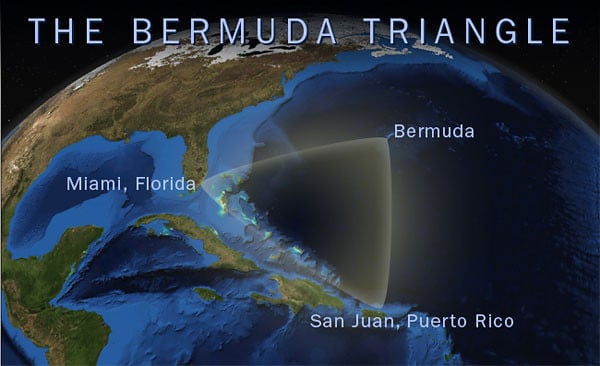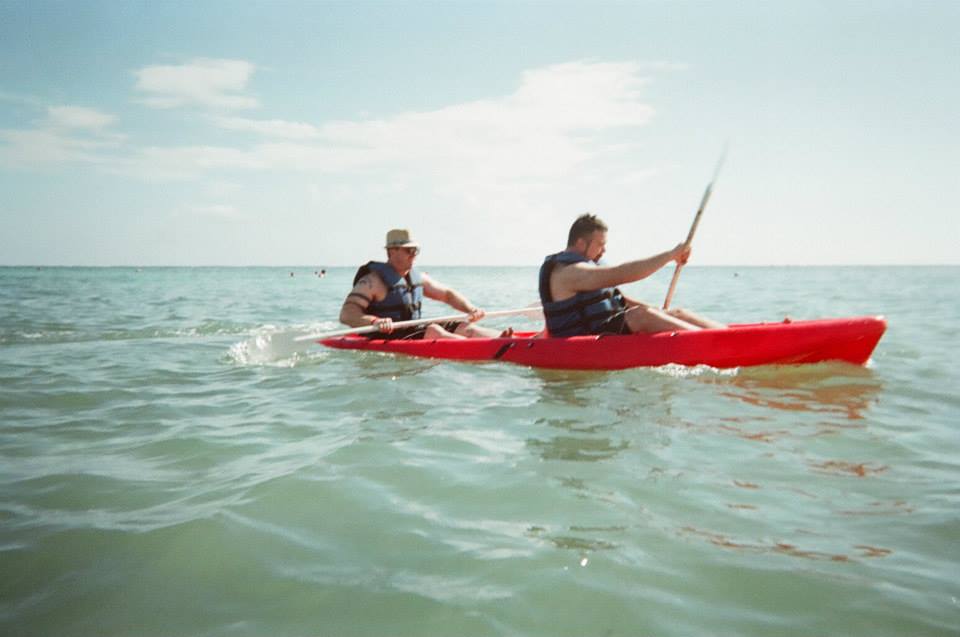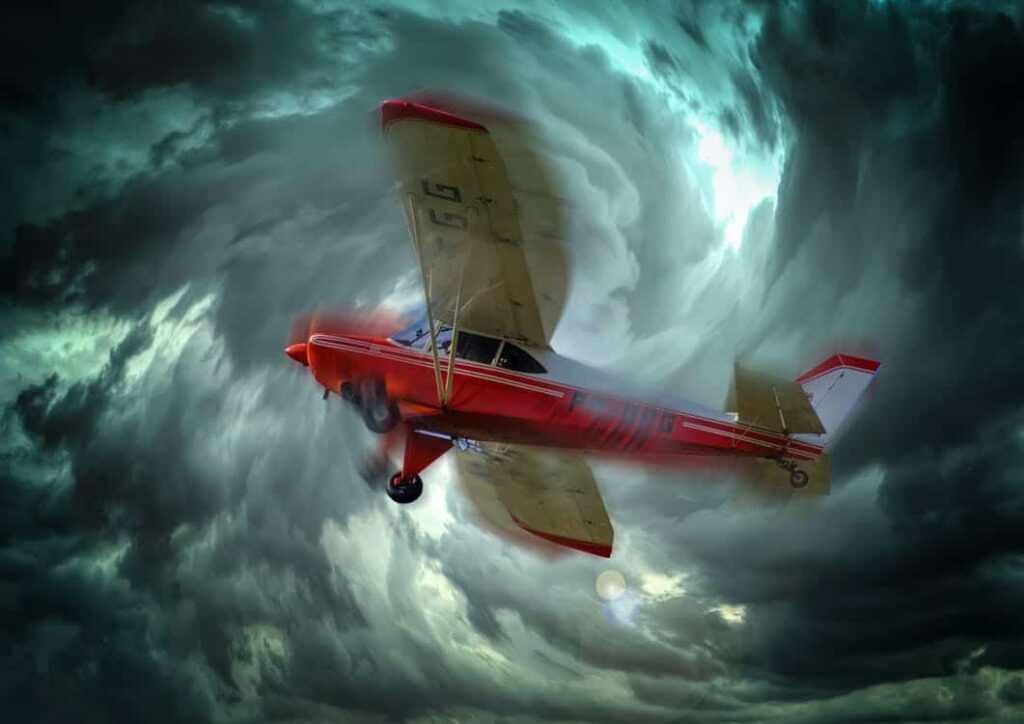This article by Alex Hollings was originally published by SOFREP.
When I was a kid, blessed with my ignorance of geopolitics and the looming rise of terrorism, I was aware of only a few legitimate threats to my safety and well-being. Rocky, I was aware, had already successfully defused the Cold War through the art of boxing, which left only looming concerns about clowns, quicksand and the Bermuda Triangle on my childhood risk management assessments.
As I got older, those concerns slowly began to fall by the wayside as more realistic and legitimate threats usurped their roles as the things that kept me up at night. I came to understand that quicksand wasn’t nearly as prevalent as cartoons had led me to believe, that clowns were just people in makeup, and that the Bermuda Triangle was… well, to be honest, I entered adulthood still not being totally sure what the hell was going on with the Bermuda Triangle.

Related: THE SOVIET “DOME OF LIGHT” COLD WAR WEAPON MYSTERY
Over the years, countless mysteries and disappearances have been associated with the triangular expanse of ocean stretching from Bermuda (as its namesake would imply) down to Miami and eastward to San Juan, Puerto Rico, though the most famous may be that of Flight 19, a group of five U.S. Navy torpedo bombers that disappeared without a trace somewhere in the triangle on Dec. 5, 1945. Soon after those five aircraft and their 14 crew members had vanished, a Martin PBM Mariner flying boat was dispatched to begin the search and rescue operation — only to have the Mariner, and 13 more crew members, vanish as well.
Losing 27 men and six aircraft in a single day just off the American coast was, as time has shown, a tragedy of historic proportions — but was it also a paranormal one?

The first few times I traversed the Bermuda Triangle were by plane, skipping over corners of the legendary stretch of sea that’s swallowed up so many sailors, aviators and tourists alike. I shot across it in just a matter of minutes, thanks to modern commercial air travel.
Today, for most of us, the infamous Bermuda Triangle has become a “blink and you’ll miss it” part of normal travel — not the man-eating vortex of mystery I believed it to be as a kid. Still, as I peered out over the ocean from my seat high in the sky, I couldn’t help but feel a sense of death below — not in a threatening way, but more like I felt as a kid riding the school bus as we passed by the old cemetery on the far end of my neighborhood. I knew, rationally, that there was nothing to be afraid of… but something in me made me keep my eyes on it, as though it was only my attention that kept the monsters at bay.
It wasn’t until a few years later that I’d make my first pass through the Bermuda Triangle by ship, allowing me far more time to look the monster square in the eye and see which of us would blink. On my way home, I decided that the Triangle either didn’t want me, or the legends of sea monsters, interdimensional vortexes and flying saucers may have been exaggerated. To date, I’ve traveled through different parts of the Bermuda Triangle by plane or boat of varied sizes and speeds, spent days inside its spooky perimeter, scanning the horizon for signs of trouble all along the way… only to be met with a long, boring horizon or the occasionally exciting bout of rough weather.

Over the years, I’ve stolen every opportunity I could to sneak around spooky places and look for evidence of something beyond the veil of human understanding. My wife (an avid believer in all things that go bump in the night) and I (the kind of skeptical ass that’ll ruin your ghost story with fact checking) have navigated the nonsensical halls of the Winchester Mansion, trudged through the mud in long-vanished Civil War graveyards, and listened attentively to broken English descriptions of local legends on three different continents. She thinks I’m too skeptical, but the truth is that I take a hard-line approach to these things because I want to believe — and that want motivates me to cut through the bullshit.
And to be honest, that’s what the legend of the Bermuda Triangle really is.
While many will trace the Bermuda (or Devil’s) Triangle legend back to Christopher Columbus, his accounts of his compass behaving abnormally within the Bermuda Triangle really weren’t all that unusual, and, believe it or not, the “Triangle” wasn’t even blamed for the disappearance of Flight 19 back in 1945 — why, you ask? Because the pop culture icon that would become The Bermuda Triangle hadn’t been made up yet.
In 1950, the Associated Press published an article written by Edward Van Winkle Jones that was among the first to credit geography for a string of disappearances in the region. He recounted the loss of Flight 19, as well as two commercial flights that had vanished in the subsequent years, accounting for a total of 135 people he described as “swallowed without a trace.” That article encouraged another writer by the name of M.K. Jessup to write a book in 1955 that attributed those disappearances, as well as many others, to the presence of UFOs in the Bermuda Triangle and the concept continued to grow from there. By the 1970s, the idea that something was up with the Bermuda Triangle was a commonly accepted belief throughout much of the United States.

Related: THIS ONE GUY MIGHT BE THE REASON WE HAVEN’T FOUND AMELIA EARHART
Since then, many researchers have been critical of Jessup and other authors who make grandiose claims about the number of people to have vanished inside the Bermuda Triangle — and statistics back them up. The area the triangle occupies is a heavily traversed portion of the ocean and has been for centuries. Ships and aircraft from numerous nations and in widely varied conditions travel in, across or over the triangle each day; statistically speaking, some of them are bound to go down.
When comparing the Bermuda Triangle to other ocean waterways that see such heavy traffic, the rate of “disappearances” is actually just about average. The ocean, we’ve known throughout much of human history, is just really good at killing people.
Of course, there could be some unusual things at play inside the Bermuda Triangle, but they are most likely not UFOs or ghost pirates. Methane deposits released from the sea floor could potentially interrupt the function of boat and even aircraft engines, and a large enough release could even capsize a decent sized vessel… though most Bermuda Triangle conspiracy theorists don’t love the notion that the solution to the decades-long mystery is just the geothermal equivalent of farts, so they cling to the idea that the real culprit must be aliens, time travel, or the like.
It’s in our nature as humans to look for explanations when bad things happen. Ships sink, airplanes crash, and we want something to blame. In the case of the Bermuda Triangle, we’ve attached ourselves to the notion that these tragedies play a role in a bigger mystery — adding value to their sacrifice as a means to manage the pain of a very normal sense of loss.
The Bermuda Triangle, I’m sad to report, has never shown me anything more than the usual disdain for oxygen-breathers I’ve come to expect from every great body of water. It’s huge, unforgiving and busy… and as such, it occasionally claims victims.
Featured image courtesy of WikiMedia Commons.




